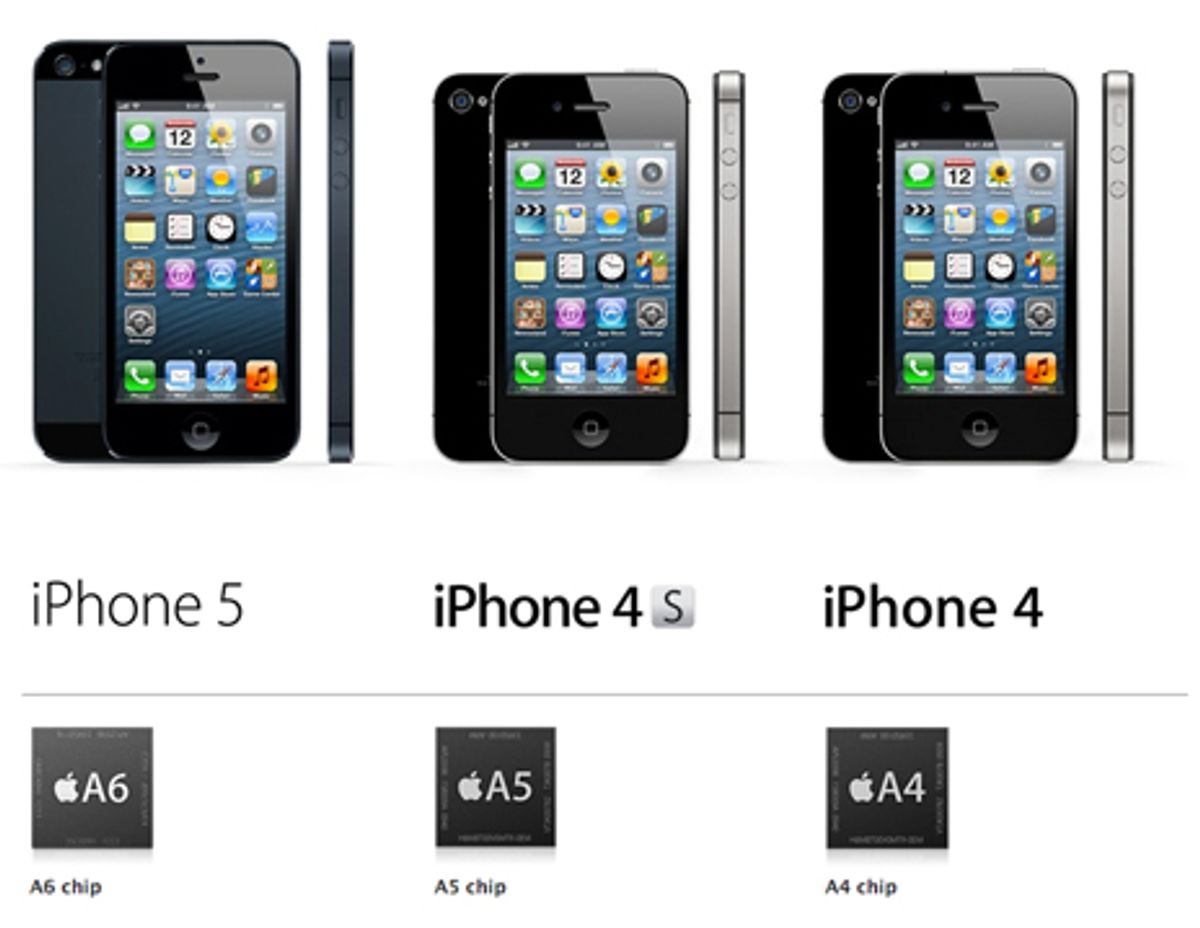Early Wednesday morning Apple shut down its online store. “We’ll be back,” the site proclaimed in multiple languages. With consumers and tech journalists already holding their breath for the hoped for release of the iPhone 5, it was a portent and a promise.
Now it’s here, the iPhone 5, with its own motto: “The biggest thing to happen to iPhone since iPhone.” But is it everything that everyone hoped for?
Well, no. Not really. Basically, the rumors were true.
It’s taller but not wider. It does LTE. The screen is a 4-inch Retina display. It’s 18 percent thinner and 20 percent lighter. It has a new operating system, iOS 6, and a new chip, the A6, which will make everything work faster and the battery last longer—according to Apple. It also has a new charging connector, Lightening, which the New York Times calls “vexing.” Budget for an adaptor.
There’s no “wow,” says CNET, as the design is basically the same. Also, there’s no NFC or inductive charging, and the dream of a significantly better battery has fallen short. CNET’s more fanciful hopes of biometric security also failed to come true. But they are super-fans of the new Apple maps app.
It’s not earthshattering, says TechCrunch. But the build is “quite nice,” and it’s “a solid and interesting improvement to a solid and interesting phone.”
The full specs are on the Apple store, which is back up and presumably prepared for the rush of pre-orders it will start accepting on 14 September. (There’s a typically glowing press release and a promo video for those for whom reading is passé.) Still, even if the iPhone 5 isn't the new sliced bread of iPhones, it's still a new iPhone. And it will sell well, starting at US $199 with a two year contract.
On the upside, it could boost the United States economy by $3.2 billion, one analyst told the Los Angeles Times.




